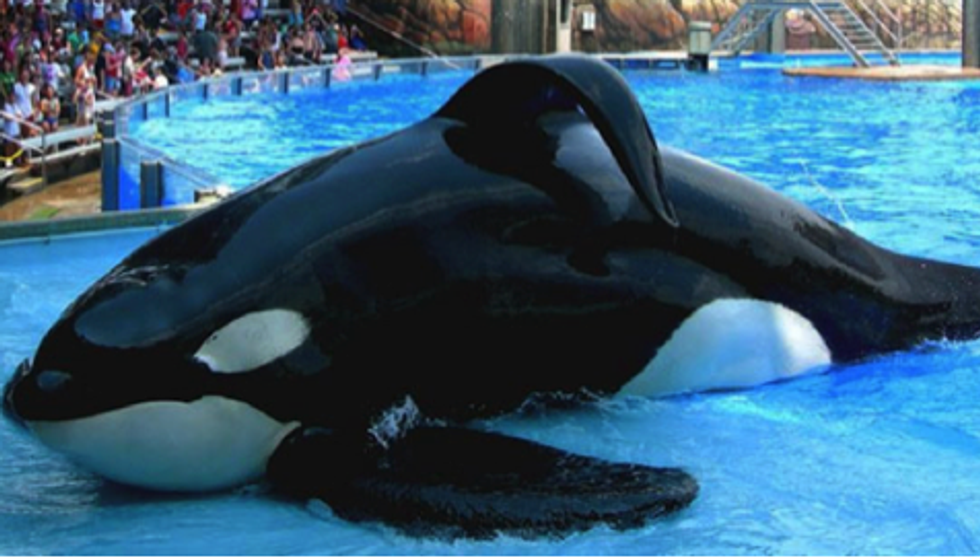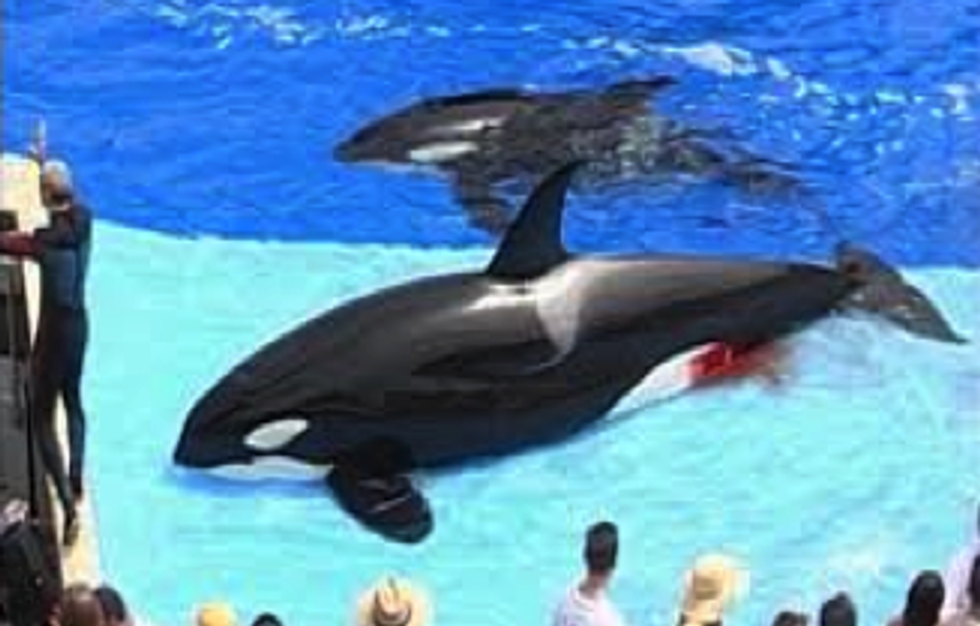Over the past few years, SeaWorld stocks have declined in result to the low attendance experienced at their parks. The cause of their misfortune, is a documentary called Blackfish, released in July 2013. This film exposes the cruelty that takes place in these theme parks. To little or no surprise, whales, especially killer whales that range around 12,000 pounds, are not meant to be kept in a swimming pool and are not able to be domesticated or securely trained. Whales, like Tilikum, the infamous killer whale that claimed trainer's lives, suffer from PTSD, infections and many other terrible side effects from living life in captivity. These include but are not limited to premature deaths, separation anxiety and depression, clostophobia and brutal beatings from fellow orcas. All of these effects are just many reasons why whales at SeaWorld should be freed and allowed to choose how to live their lives.
To begin, premature deaths are far too common at SeaWorld. The whales they currently have a suffering from numerous infections, killing many of them earlier than their expected life span. Why are their so many infections? Orcas are meant to swim in large bodies of cold salt water, not a small cramped pool filled with tabs of salt and chemically treated water.
Recommended for you
How are these bags acceptable to hold a whale for more than one minute? Or even up to six hours!
Secondly, family is extremely important to orcas. Whales are social mammals.Once born, an orca will follow his/her mother for their entire life. These poor orcas at SeaWorld are brutally separated from their mothers and family causing a lot of emotional distress. As seen in the film “Free Willy” and documentary “Blackfish,” orcas will spend nights crying out distance calls to try to reunited with their families. No one deserves to be separated from their mothers. Interestingly, orcas have brains that are way bigger than ours and show more synapse connections in their amygdala, the emotional response area. Meaning, they are most likely more social and in tune with each other than humans are with their loved ones.
Not to mention, SeaWorld has no capacity for these whales. Their tanks are deadly, allowing minimal room for a whale to enjoy him/herself. The whale from “Free Willy”, Keiko, had a very difficult and painful life in particular. She suffered numerous infections which sadly is very common with all SeaWorld animals. Many orcas and dolphins suffer from infections that are non existent in the wild. In addition, Kieko was constantly in pain and had stomach problems while in captivity. Luckily, unlike many orcas, she was given a sea cage in Iceland where she was able to roam in real salt water and live her life without suffering from nasty preventable infections. Keiko was given the choice to stay in the “safety” of her sea cage or swim free wherever she decided. Officials had inserted a tracker on her and were able to see where she decided to go. Not surprisingly enough, she did not choose to stay in the sea cage but instead found two other whale companions and lived freely in the open ocean. The tanks are not able to hold 12,000 pound whales, they need to be roaming free.
Whales need space. they need the luxury of swimming wherever they please. if not collapse dorsal fins are common negative side effect. Contrary to what SeaWorld claims, collapsed dorsal fins are not common nor healthy. Sadly, every whale in captivity suffers from a collapsed dorsal fin. To put things in view, 1 percent of whales in the wild suffer from collapsed dorsal fins as opposed to the 100 percent of SeaWorld orcas that have collapsed dorsal fins. This is a result of their unnatural diet in captivity (thawed dead fish) and insufficient tank space. Imagine living your entire life in a bathtub, is how the documentary, "Blackfish" put it.
Lastly, orcas are very kind, gentle mammals. hey barely wreck havoc and enjoy living calm lives. However, in captivity orca verses orca is extremely common and huge issue. Why? Well, orcas have tight social bonds,with friends and family that speak their own languages within their group. Each group of orcas has a completel different type of vocal sounds and rules. Thus, orcas are not compatible with other orcas that are not part of their pack. However, when they do come in contact with another unknown Orca, which is rare in the wild, they do not get along. This is why when they are introduced they tend to feel threatened and fight. These fights usually happen at night when the orcas are put in tight dark closed tanks. In the wild, the ocean has so much space that the whales can get away from each other and escape each other’s cruelty. Tilikim showed signs of PTSD, attacking and killing trainers, had numerous teeth marks on his body from the other whales. He is not the only whale suffering from violence, many have been attacked by other whales while in SeaWorld captivity, filling the pools up with bright red blood. It is clear that SeaWorld does not know enough about whales to be putting different types of orcas in tight perimeters. Or maybe SeaWorld just doesn't care?
The issue now is what do we do? We have spread awareness and have successfully brought their income down. SeaWorld is beginning to suffer, not being able to breed any more orcas. But the problem is we still SeaWorld theme parks filled with 23 orcas whales. All 23 are suffering a life in captivity because of someones possibility to profit.
SeaWorld needs to admit they are failing as a company and begin to contribute to the rehabilitation of their whales by merging them into the wild with sea cages.
They may claim the whales aren't capable of living alone but then how have their been orcas that have survived life in the wild after life in captivity, like Keiko.






















